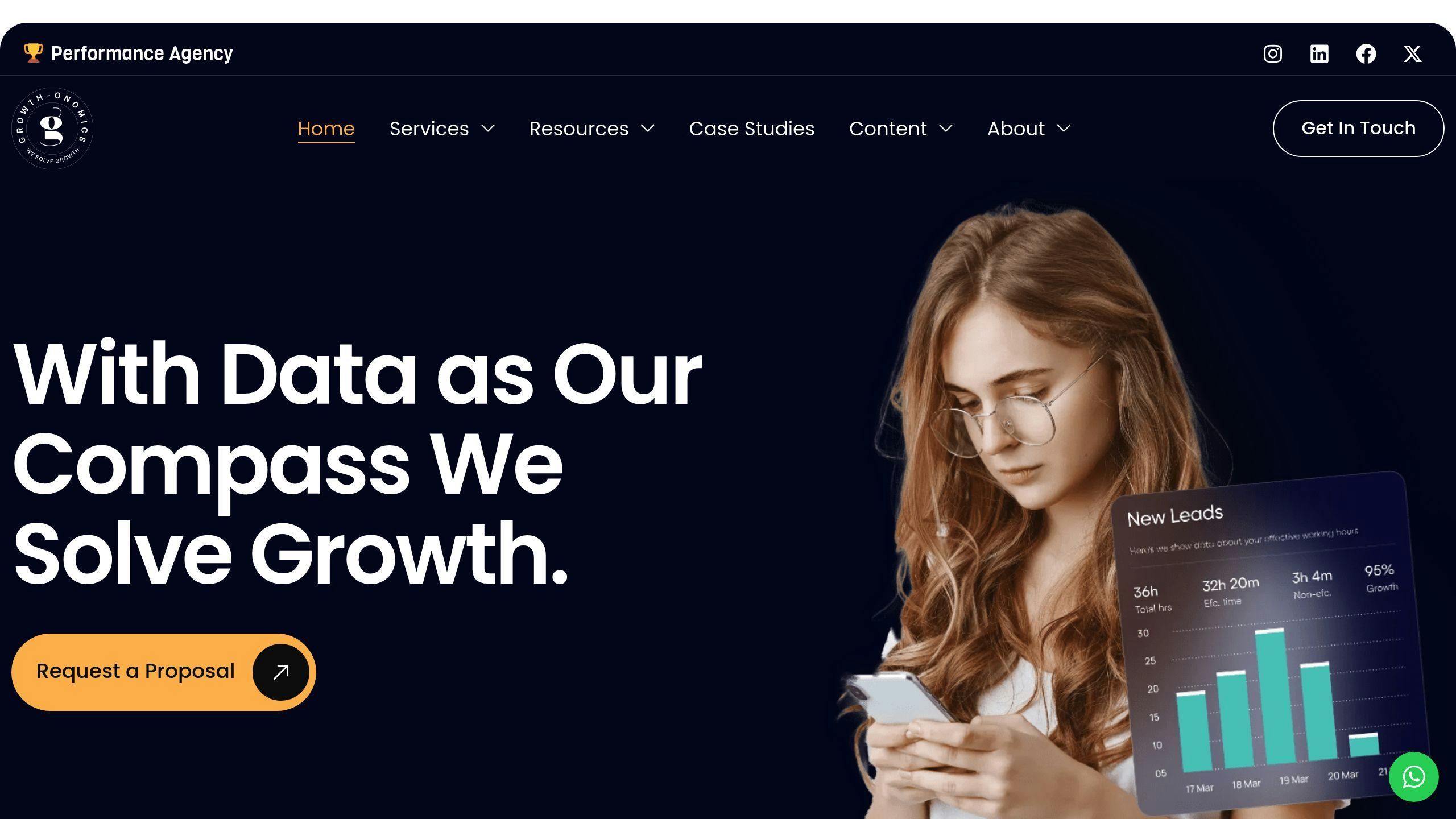Big data forecasting helps businesses predict trends and improve decisions, but it comes with major ethical challenges. Here’s what you need to know:
- Data Privacy: 81% of people worry about data misuse. Strong encryption, clear consent, and regular audits are essential to protect user privacy.
- Algorithm Bias: Bias in data leads to unfair outcomes. Regular testing, diverse datasets, and transparency can reduce bias.
- Transparency: Clear, understandable predictions build trust. Tools like Explainable AI make forecasts easier to interpret.
- Data Security: Data breaches cost $4.35M on average. Strong encryption, multi-factor authentication, and employee training are key to preventing them.
Balancing innovation with ethics is critical. Companies must prioritize privacy, fairness, and security to maintain trust and comply with regulations.
Ethical Considerations in Data Science
Data Privacy Issues and Solutions
Data privacy is a growing concern in big data forecasting, with organizations under increasing pressure to handle data responsibly. Studies reveal that 80% of consumers worry about their personal data being used without proper consent [2].
Common Privacy Problems
As technology advances, data privacy challenges have become more intricate. High-profile cases of data misuse by major companies have sparked public outrage and hefty regulatory fines, highlighting the risks of poor privacy controls.
The financial toll is steep – the average cost of a data breach now stands at $3.86 million [3]. Companies face issues such as:
| Privacy Challenge | Impact | Risk Level |
|---|---|---|
| Unauthorized Data Collection | Erosion of trust, legal penalties | High |
| Poor Consent Management | Non-compliance, reputation damage | High |
| Cross-border Data Transfers | Complex compliance requirements | Medium |
| Third-party Data Sharing | Lack of control over data usage | High |
Tackling these challenges requires proactive policies and technologies to protect user data and meet regulatory demands.
How to Protect User Privacy
To maintain trust and meet legal requirements, organizations need strong privacy measures. Strategies like data minimization and anonymization are key.
Here are some effective steps:
- Encryption and data masking: Protect user identities while keeping data functional [4].
- Transparent policies: Develop clear privacy guidelines and give users control over their data, aligning with GDPR and CCPA [4][2].
- Regular audits: Conduct privacy reviews to uncover and fix vulnerabilities.
Focusing on privacy not only ensures compliance but also reinforces ethical practices, strengthening customer trust over time.
Small Business Privacy Benefits
For small businesses, strong privacy measures can be a game-changer. With 60% of organizations reporting data breaches in the last two years [3], prioritizing privacy helps avoid penalties, build trust, and stand out in a market where consumers value data protection.
Investing in privacy safeguards prevents costly financial and reputational damage. Small businesses that emphasize privacy often see increased customer loyalty and improved competitive standing.
Data and Algorithm Bias
Bias in data and algorithms creates challenges for accurate predictions and ethical decision-making. Studies reveal that algorithmic bias can lead to unfair outcomes, influencing business strategies and customer interactions.
Common Bias Types in Data
Bias in data takes on various forms, each capable of distorting forecasting outcomes. Here are some of the most common types:
| Bias Type | Description | Impact on Forecasting |
|---|---|---|
| Sampling Bias | Data that doesn’t represent the target group | Skewed predictions for underrepresented groups |
| Confirmation Bias | Favoring data that supports existing beliefs | Reinforces flawed assumptions |
| Historical Bias | Past data reflecting societal inequalities | Continues discriminatory trends |
| Information Bias | Incomplete or uneven data collection | Produces distorted analysis |
"Algorithms are not objective; they are opinions embedded in code" [1]
Reducing Bias in Data and Algorithms
Minimizing bias requires careful planning during data collection and analysis. Companies should adopt thorough testing practices and seek diverse data sources.
Some effective strategies include:
- Using multiple sources for data validation to cover a wide range of perspectives.
- Conducting regular audits of algorithms with tools like AI Fairness 360.
- Forming diverse teams to review and test algorithms for bias.
The Cambridge Analytica scandal serves as a cautionary tale. It showed how unchecked algorithmic bias could manipulate user groups through skewed data, underlining the need for vigilance in preventing bias [3].
Ethical AI Marketing Practices
For ethical AI in marketing, businesses must combine fairness with effective targeting. Transparency should be a priority while staying competitive.
Here are some actionable steps:
- Ensure human oversight in AI-driven decisions.
- Regularly audit AI systems and share findings openly.
- Test algorithms to identify and address discriminatory effects.
Adopting ethical AI practices can enhance customer trust and help companies avoid regulatory issues. This approach also meets the growing consumer demand for responsible and fair data usage.
While addressing bias is a big step, ensuring predictions are clear and transparent is just as important for building trust and promoting ethical progress in marketing.
Making Forecasts Clear and Understandable
Addressing bias is just one step – making forecasts easy to understand is equally important for ethical data practices. Being transparent not only helps build trust but also ensures compliance and strengthens relationships with customers and stakeholders.
Why Clear Forecasting Matters
When forecasts are clear, trust grows, and decision-making improves. Transparency in predictions helps businesses align with regulations and fosters stronger connections with stakeholders.
Tools That Simplify Forecasting
Modern technology makes it easier to decode complex forecasting models. Tools like Explainable AI (XAI) break down predictions into understandable components. Features like attribution analysis, interpretability tools, and model-agnostic explanations reveal how decisions are made and highlight the factors that influence outcomes.
How Small Businesses Benefit
For small businesses, transparent forecasting can be a game-changer. By adopting clear data practices, they can build stronger customer loyalty and compete more effectively with larger companies.
Transparency gives small businesses an edge by enabling:
- Clear communication with customers about how predictive models work
- Faster adoption of transparency measures
- Greater confidence in the accuracy of forecasts
- Better customer understanding of data-driven decisions
Routine audits and reviews help ensure that transparency efforts align with business goals and meet customer expectations for ethical data use.
While transparency fosters trust, safeguarding data remains just as vital for ethical forecasting practices.
sbb-itb-2ec70df
Data Security Best Practices
While being transparent builds trust, securing data is just as important for ethical forecasting. Recent statistics reveal that the average cost of a data breach has climbed to $4.35 million per incident [3].
Data Breach Consequences
When security fails, the fallout can touch every part of an organization:
| Impact Area | Consequences |
|---|---|
| Financial | Costs from breaches, legal penalties, and fines |
| Reputation | Loss of customer trust and market standing |
| Operational | Service interruptions and higher security costs |
| Compliance | Regulatory scrutiny and investigations |
Security Implementation Steps
A study by Microsoft found that 99.9% of avoidable breaches stem from weak authentication, underscoring the need for strong, basic security practices.
Key measures to implement include:
- Strong encryption, firewalls, and keeping software updated regularly
- Multi-factor authentication and managing access based on roles
- Employee training programs with hands-on security exercises
"Implementing these data security best practices – encryption, access control mechanisms, regular audits, data masking, employee training, and secure backups – can help organizations effectively safeguard confidential data from internal and external threats."
Data Rules and Business Growth
Investing in security doesn’t just protect data – it also improves efficiency and builds trust. Practices like reducing unnecessary data storage, clear processing policies, and frequent audits can improve operations and strengthen customer relationships. For small businesses, cloud-based tools provide cost-effective and scalable solutions [4], helping them stay secure and competitive.
Growth-onomics and Ethical Data Use

Growth-onomics’ Ethical Data Approach
Growth-onomics focuses on three key areas to ensure ethical data use: transparency, accountability, and regular algorithm reviews. Their approach prioritizes protecting user privacy while delivering strong marketing outcomes.
The agency builds trust by being clear about how data is collected, conducting frequent algorithm checks, and using strong security measures. They also ensure compliance with regulations like GDPR and CCPA. By combining privacy safeguards with performance-driven strategies, they help businesses grow without compromising on ethics.
Solutions for Small and Medium Businesses
Growth-onomics adapts ethical practices typically used by large enterprises into manageable solutions for smaller businesses. Their detailed audit process guides companies through algorithm-related challenges while keeping their marketing effective. They assist small businesses in adopting practices such as limiting unnecessary data collection, verifying data accuracy, and staying on top of compliance requirements.
With their expertise in performance marketing and data analytics, Growth-onomics helps businesses:
- Set up clear and honest data collection methods
- Regularly evaluate algorithms for fairness
- Maintain transparent reporting systems
- Use cost-effective security tools
This tailored approach turns ethical data practices into a strength rather than a regulatory hurdle. For small and medium-sized businesses, this is especially helpful as they juggle limited resources with increasing privacy demands and regulatory standards.
Conclusion: Ethics and Innovation in Forecasting
Main Points Review
Big data forecasting brings ethical challenges that demand thoughtful solutions. One major issue is data privacy, which calls for strong security measures and open communication about how data is collected [1][4]. Another pressing concern is algorithmic bias, emphasizing the need for diverse datasets and routine audits of forecasting models [3]. Companies that prioritize transparent data practices and robust privacy protections often see both improved customer trust and better forecasting results [4].
To tackle these challenges, organizations should focus on key elements like safeguarding privacy, reducing bias, ensuring transparency, and implementing strong security measures. These steps lay the groundwork for addressing ethical concerns effectively.
Next Steps
Collaboration across industries is crucial for setting ethical standards in data use. Organizations should work on creating detailed data governance frameworks that address current and future ethical issues [1]. Here are some priority actions to consider:
- Conducting in-depth privacy impact assessments
- Using automated tools to detect and address bias
- Setting clear protocols for data handling
- Training teams on ethical data practices
- Joining industry-wide ethical AI initiatives
- Helping develop standardized ethical guidelines
- Upgrading security systems
- Partnering with others to share insights and strategies
Balancing innovation with responsibility is the key to ethical forecasting. By focusing on openness, accountability, and security, businesses can earn trust while staying competitive in today’s data-driven world [1][3].
FAQs
When dealing with ethical challenges in big data forecasting, these FAQs tackle common concerns and suggest actionable steps.
What is the challenge of data privacy?
Data privacy issues stem from collecting and using personal information without proper consent or transparency. For example, the Cambridge Analytica scandal demonstrated how mishandling data could lead to privacy violations and exploit consumers. Research shows that 71% of consumers are deeply concerned about how companies manage their personal data [2].
What are the ethical issues with predictive analytics?
Predictive analytics brings several ethical challenges that demand attention and thoughtful solutions.
Here’s a breakdown of common challenges and ways to address them:
| Challenge | Solution |
|---|---|
| Data Collection and Transparency | Ensure clear consent processes and openly communicate how data is used |
| Algorithmic Bias | Conduct regular audits and use diverse datasets to avoid discriminatory outcomes |
| Data Security | Apply strong encryption, access controls, and continuous monitoring to protect data |
These challenges are not just theoretical. For instance, predictive policing algorithms have shown biased patterns against minority communities, underscoring the importance of ethical oversight in analytics [3].
To tackle these issues, organizations can take steps like:
- Using tools such as Explainable AI to provide clarity on predictions
- Performing routine checks for bias
- Strengthening security protocols
- Clearly communicating how data is collected and used









